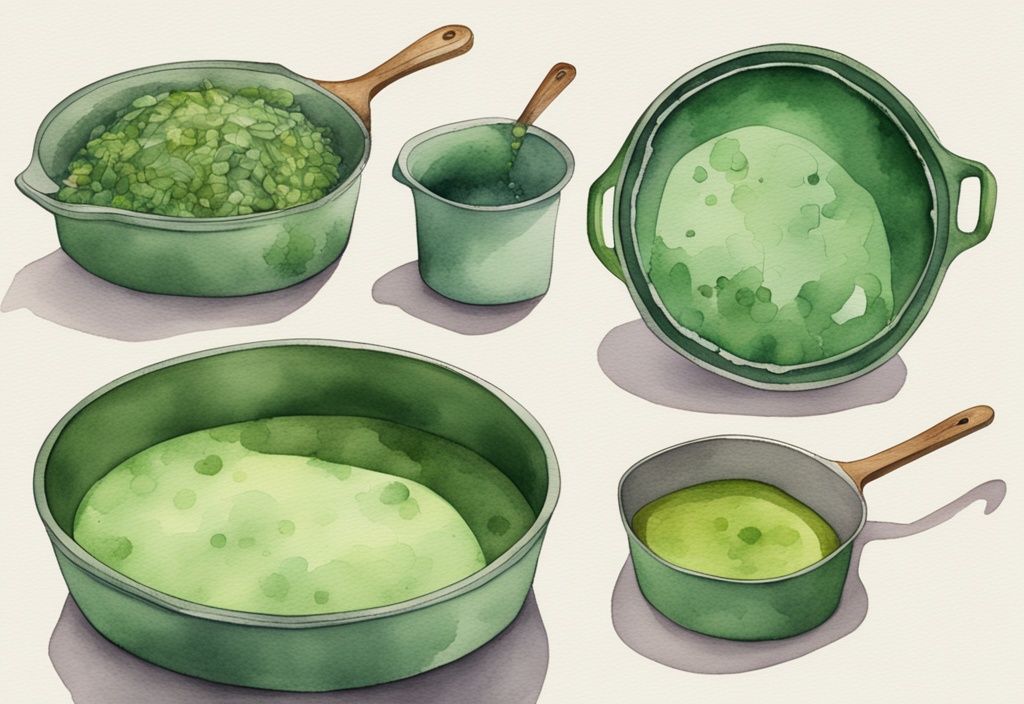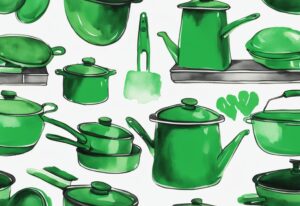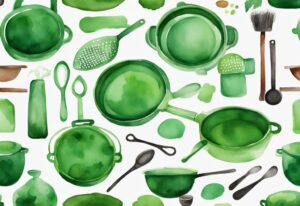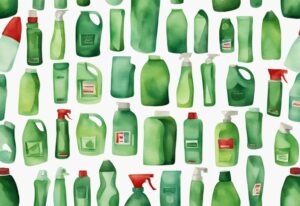HexClad vs Caraway: Unbiased Comparison & Cookware Review
Ever wondered which non-toxic cookware brand, HexClad or Caraway, is truly the best for your kitchen? As a passionate advocate for healthier living, I’ve been on a similar quest myself. Both brands have their unique strengths – HexClad’s innovative hybrid design promises durability and versatility, while Caraway’s commitment to non-toxic materials and eco-friendliness is commendable.
In this article, we’ll delve into a detailed comparison between HexClad and Caraway, shedding light on their differences and helping you make an informed decision. Whether you’re a seasoned chef or a home cook, this guide will help you align your cookware choices with your health and environmental values, ensuring a safer and more enjoyable cooking experience. So, let’s dive in and unravel the mystery together!
Introduction to HexClad and Caraway
In the fascinating world of high-quality nonstick cookware, the comparison of HexClad vs Caraway offers a unique perspective on what truly matters in your kitchen. Both brands have carved out their own niches, each catering to different needs and preferences. I remember the first time I encountered HexClad’s innovative hybrid design. It was like discovering a secret weapon in my cooking arsenal. The blend of stainless steel durability with nonstick convenience is perfect for those intense cooking sessions where high temperatures and metal utensils are the norm. It’s a game-changer for serious home cooks who value performance and longevity.
Caraway, on the other hand, speaks to my heart with its commitment to aesthetics and eco-friendliness. The use of nontoxic ceramic materials means a safer cooking experience, free from harmful chemicals. I love how Caraway’s cookware comes in a rainbow of colors, adding a splash of style to my kitchen while aligning with my values of sustainability. The brand’s dedication to safe materials resonates with the growing demand for environmentally conscious products, making it a favorite for those who prioritize health and design.
When weighing HexClad vs Caraway, it often boils down to what you value most. HexClad’s emphasis on durability and performance makes it a top choice for those who love to cook with precision and power. Meanwhile, Caraway’s focus on non-toxic materials and visual appeal attracts those who cherish health and aesthetics. Each brand brings something special to the table, making the decision a personal one based on your cooking style and priorities.
Material and Construction: What Makes Them Unique?
When diving into the world of cookware, the HexClad vs Caraway debate often surfaces, each brand offering its own unique approach to design and functionality. Let’s explore what sets them apart.
HexClad’s Hybrid Design
In my journey towards healthier cooking, I stumbled upon HexClad, and it was love at first sight. This cookware’s hybrid design is truly something special. Imagine the robustness of stainless steel married with the ease of a PTFE non-stick coating. The result? A piece of cookware that feels both sturdy and sophisticated.
The hexagonal pattern, crafted through advanced laser etching, isn’t just for show. These raised stainless steel hexagons protect the non-stick surface, meaning you can use metal utensils without a second thought. It’s a game-changer for someone like me who loves to experiment in the kitchen.
Moreover, the 3-ply stainless steel base ensures that the cookware remains durable and warp-resistant, no matter how adventurous your cooking gets. This thoughtful design makes HexClad a versatile ally in the kitchen, ready to tackle any culinary challenge.
Caraway’s Ceramic Coating
On the other hand, Caraway captured my heart with its commitment to non-toxic materials and stunning design. The cookware’s ceramic-coated aluminum core, paired with a stainless steel base, is completely free from PTFE and other harmful chemicals. This aligns perfectly with my mission to create a healthier home environment.

Caraway’s vibrant exterior colors and sleek, shiny gray ceramic interior make it a joy to use. However, I learned the hard way that this beautiful ceramic coating requires gentle handling to avoid scratches and chips. It’s a small price to pay for cookware that prioritizes both safety and style.
For those of us who cherish eco-friendliness and kitchen aesthetics, Caraway is a delightful choice. It’s more than just cookware; it’s a statement of our commitment to a healthier lifestyle.
Performance and Durability: Which Lasts Longer?
In the world of cookware, the choice between HexClad and Caraway can significantly impact your cooking experience and the longevity of your kitchen tools. Each brand brings its own strengths and challenges to the table, making the decision a personal one based on your cooking style and priorities.
Heat Conductivity and Retention
When I first started exploring the differences between HexClad and Caraway, I was intrigued by how each handles heat. Caraway cookware heats up swiftly and evenly, a feature I found particularly useful when preparing delicate dishes that demand precision. Yet, I noticed that over time, the non-stick surface of Caraway began to lose its magic, which could be a concern for long-term use.
HexClad, on the other hand, impressed me with its robust heat retention, making it ideal for any culinary enthusiast. If you’re also a pet owner who loves to create, you might be interested in exploring how to make DIY dog toys for power chewers, combining both kitchen creativity and fun for your pets. Its 3-ply construction ensures that the cookware holds consistent temperatures, which is a blessing for those of us who love experimenting with various cooking techniques. This makes HexClad a versatile companion in the kitchen, capable of handling everything from slow-cooked stews to quick sears.
Non-Stick Properties and Longevity
The non-stick debate between HexClad and Caraway is a fascinating one. HexClad offers a unique blend of durability and versatility, but it does require a bit of finesse to keep food from sticking. Like many non-stick surfaces, its coating can wear down over time, so a gentle touch is key.
Caraway, with its ceramic coating, provides a wonderfully slick surface right from the start. It’s perfect for those of us who appreciate an effortless cooking experience. However, I’ve learned that it’s not the best choice for high-heat cooking, as frequent use for searing can diminish its non-stick properties. This means that while Caraway is a joy to use, it requires careful handling to maintain its performance and longevity.
In the end, choosing between HexClad and Caraway boils down to what you value most in your cookware. Whether it’s the heat retention of HexClad or the immediate non-stick ease of Caraway, both have their place in a thoughtfully curated kitchen.
Safety and Eco-Friendliness: Which is Better for You and the Planet?
When it comes to choosing between HexClad and Caraway, understanding their impact on both your health and the environment can guide you towards a more conscious decision. Let’s explore how these cookware brands measure up in terms of safety and sustainability.

Non-Toxic Materials
In the ongoing debate of HexClad vs Caraway, non-toxic materials are a pivotal consideration. Caraway cookware shines brightly here, with its steadfast commitment to safety. Free from PTFE, lead, and cadmium, Caraway ensures you can cook without the fear of harmful chemicals sneaking into your meals. This dedication is not just a claim; it’s backed by rigorous third-party testing. As someone who values health, this gives me peace of mind, knowing that my cookware aligns with my non-toxic lifestyle.
HexClad, on the other hand, presents a different story. While it is marketed as non-toxic, it does incorporate PTFE in its non-stick coating. This material, though effective, can release toxic fumes at high temperatures. I remember the first time I learned about this; it made me cautious about using HexClad at higher heat settings. For those of us prioritizing non-toxic kitchenware, this distinction is significant.
Sustainability in Production
When comparing HexClad vs Caraway in terms of sustainability, Caraway clearly takes the lead. The brand’s commitment to eco-friendliness extends beyond its products to its production processes.
Caraway uses sustainable materials and packaging, which aligns perfectly with environmentally conscious practices. This resonates deeply with me, as I strive to minimize my environmental footprint.
HexClad, however, doesn’t emphasize sustainability in the same way. If you’re interested in learning about other brands facing challenges, you might find the Avocado mattress lawsuit intriguing.
While it excels in durability and performance, its lack of focus on eco-friendly practices can be a downside for those of us who prioritize environmental responsibility. As sustainability becomes more crucial, Caraway’s approach to eco-friendly production stands out, making it a preferred choice for environmentally aware consumers like myself.
Price and Value: Which Gives More Bang for Your Buck?
When it comes to choosing between HexClad and Caraway, understanding the price and value each brand offers can guide you in making a decision that aligns with your priorities.
Cost Comparison
In my journey towards a healthier kitchen, I’ve often found myself weighing the costs of HexClad vs Caraway. HexClad, with its premium pricing, reminds me of the investment I made in a high-quality stainless steel set years ago. Its hybrid design, merging the resilience of stainless steel with the ease of non-stick, feels like a worthy splurge for those who cook often and value durability.
Caraway, though also on the higher end for non-stick cookware, speaks to my heart with its beautiful aesthetics and commitment to non-toxic materials. The ceramic-coated cookware not only looks stunning on my stovetop but also aligns with my passion for sustainable living. For those who prioritize eco-friendly choices, Caraway’s price is justified by its environmental benefits.
Warranty and Customer Support
The differences in warranty and customer support between HexClad and Caraway are quite telling. Caraway offers a one-year warranty, which covers major damages. This reflects their dedication to customer satisfaction and reliability, something I deeply appreciate as a consumer who values peace of mind.
HexClad, on the other hand, offers a lifetime warranty, excluding the non-stick surface. This lifetime guarantee speaks volumes about their confidence in the longevity of their products. It’s comforting to know that my investment in their cookware is backed by such a robust promise. Both brands have established strong customer support systems, ensuring that any issues are promptly addressed, which is a relief for anyone navigating the complexities of cookware choices.

Conclusion: HexClad vs Caraway – The Final Verdict
Choosing between HexClad and Caraway cookware can feel like a personal journey, shaped by your own cooking habits and priorities. Both brands bring something special to the table, yet neither is the one-size-fits-all solution for every kitchen.
Let me share a bit about HexClad. Its hybrid design is a game-changer, blending the strength of stainless steel with the ease of non-stick. For those who, like me, appreciate durability and the freedom to use metal utensils without a second thought, HexClad is a dream. Plus, its dishwasher-safe feature is a blessing for busy households. However, the presence of PTFE might be a concern if you’re focused on non-toxic materials.
Now, let’s talk about Caraway. If eco-friendliness and non-toxic materials are at the top of your list, Caraway is likely to catch your eye. Its ceramic coating is free from PTFE, lead, and cadmium, offering peace of mind for health-conscious cooks. The vibrant designs add a splash of color and style to any kitchen, which I personally adore. But, a gentle reminder: the ceramic coating needs a bit of TLC to avoid scratches and chips, and it might not match HexClad’s durability over time.
Ultimately, the choice between HexClad and Caraway is yours to make. If non-toxic materials and a stylish design resonate with you, Caraway might be your match. However, if you lean towards durability and versatility, HexClad could be your go-to. For those of us who want it all, perhaps a mix of high-quality stainless steel and Teflon-coated non-stick pans could offer the perfect balance of performance and longevity.
Remember, whatever you choose, you’re taking a step towards a healthier, more sustainable kitchen. And that’s something to celebrate!
FAQ
What are the main differences between HexClad and Caraway cookware?
When I first explored the world of cookware, I was struck by how HexClad and Caraway cater to different needs. HexClad combines the strength of stainless steel with PTFE non-stick, making it a versatile choice for those who value durability. On the other hand, Caraway’s PTFE-free ceramic coating caught my eye for its commitment to aesthetics and non-toxic materials. While HexClad feels like a trusty workhorse, Caraway appeals to those who prioritize eco-friendliness and design.
Which brand is better for high-heat cooking?
In my kitchen adventures, I’ve found HexClad to be a reliable companion for high-heat cooking. Its stainless steel construction ensures excellent heat retention, though it’s wise to be cautious with PTFE at high temperatures. Caraway, with its ceramic coating, shines in low to medium heat settings, where it maintains its integrity and beauty without the risk of overheating.
Are there any safety concerns with HexClad or Caraway cookware?
Safety is always at the forefront of my mind when choosing cookware. HexClad, while effective, contains PTFE, which can release toxic fumes if overheated. Caraway, however, offers peace of mind with its PTFE-free, lead-free, and cadmium-free materials, all backed by rigorous third-party testing. It’s reassuring to know that Caraway prioritizes safety without compromising on performance.
How do HexClad and Caraway handle customer service and warranties?
From my experience, customer service can make or break a brand. Caraway provides a one-year warranty for major damage, which is a decent safety net. HexClad, however, goes a step further with a lifetime warranty, excluding the non-stick surface, and is renowned for its strong customer support. It’s comforting to know that HexClad stands by its products for the long haul.
Hi, I’m Olivia Green, the voice behind nontoxicways.com. I’m passionate about helping you make the shift to a healthier, non-toxic lifestyle without feeling overwhelmed. I love sharing my personal journey, from small changes to big transformations, along with practical tips that make it all feel doable. My goal is to inspire and guide you toward a lifestyle that benefits both your well-being and the planet. Let’s take this journey together, one simple step at a time!














Post Comment